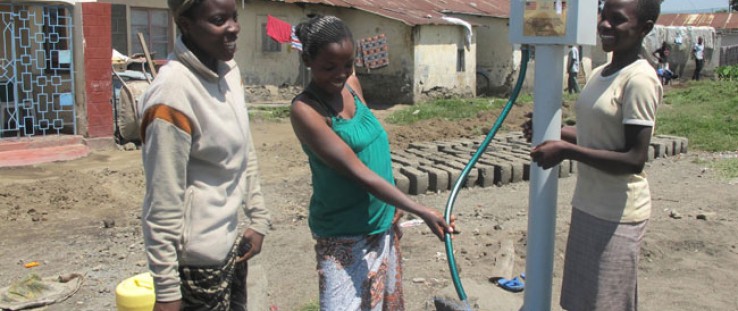 Tenants in Nakuru enjoy the convenience and affordability of using public prepaid meters. Jane Maina was one the first landlords to sign up for the installation of public prepaid meters in her compound with 43 houses.
Emily Mutai, SUWASA
Tenants in Nakuru enjoy the convenience and affordability of using public prepaid meters. Jane Maina was one the first landlords to sign up for the installation of public prepaid meters in her compound with 43 houses.
Emily Mutai, SUWASA
 Tenants in Nakuru enjoy the convenience and affordability of using public prepaid meters. Jane Maina was one the first landlords to sign up for the installation of public prepaid meters in her compound with 43 houses.
Emily Mutai, SUWASA
Tenants in Nakuru enjoy the convenience and affordability of using public prepaid meters. Jane Maina was one the first landlords to sign up for the installation of public prepaid meters in her compound with 43 houses.
Emily Mutai, SUWASA
For Jane Maina, being a landlord comes with its own special set of headaches, many of them related to water supply for about 150 tenants. High water bills that at times dwarf the meager income she earns renting her property forced her to implement a tight water-rationing system, whereby the taps were only opened three times a week, for four hours in the early morning.
“People used to fight over water, and struggle to get to the taps at the designated time,” she said, trying to explain the system that limited tenants to a weekly ration of 240 liters. “I used to get all sorts of abuse because my tenants were unhappy with the water rationing. It was like I was the enemy.”
It’s a familiar tale heard all over Nakuru’s low-income settlements and one of East Africa’s fastest growing cities: Water supplies are expensive, landlords limit access and residents pay a premium for ad hoc deliveries of water of questionable quality.
It is estimated that by 2030 more than half of Africans will live in urban areas, but the percentage of urban residents with household water connections is actually falling. Urban utilities face aging infrastructure, growing demand and the challenges of reaching low-income populations, often in unplanned areas. The result is an increasing reliance on uncertain and unsafe supplies.
Nakuru sits at the base of the Rift Valley and holds great agricultural and tourism potential. However, more than 40 percent of its population still lives below the poverty line, and economic pressures increase with the growing population.
More than two-thirds of Nakuru’s residents—around 250,000 people—live in large-scale informal settlements, relying on vendors to bring them 20-liter jerry cans of water for an average 6.3 Kenyan shillings, or roughly 7 cents. This amount of water typically lasts a person in the developing world two days—and has to cover drinking, washing and cooking. By contrast, the average North American uses 400 liters of water a day. For an average household of five in Kenya, the weekly water routine involves buying and carrying more than 17 cans of water; each of those cans weighs up to 40 pounds.
USAID, through its Sustainable Water and Sanitation in Africa project, has been working since November 2010 to overcome these challenges in a way that is both profitable for the utility and affordable for the population. To make this happen, the Agency is partnering with the national Water Services Trust Fund (WSTF), the local utility Nakuru Water and Sanitation Services Company (NAWASSCO) and Family Bank.
With financing worth about $210,000—just over half provided by USAID—the pilot project is installing 95 public meters in compounds owned by landlords like Maina, providing service to six low-income areas. The meters, locally sourced and maintained, are located within each housing compound, providing a safe and secure water point. They use simple but sophisticated technology, allowing people to take as much water as they are able to pay for in advance, on a time schedule that is convenient for them.
The meter is like a water ATM. Consumers pre-pay for water, then receive a token that records the total balance. To access water, the consumer inserts the token in the meter and water flows. A digital display on the meter lets the consumer know how much water they have received and tracks the remaining credit. When the consumer removes the token, water stops flowing.
Cheaper, Safer Water
Currently, 8,000 Nakuru residents are using the meters to access water at a cost of about 2 cents per 20-liter jerry can—70 percent less than they had been paying before. The utility will recover its costs within two years.
“At the end of the day, NAWASSCO gets upfront payment, and the urban poor have access to better and cheaper water,” says NAWASSCO Managing Director John Cheruiyot.
The utility is now arranging financing to expand the number of meters to serve 30,000 residents within the year.
“Taking out this loan has given us confidence to now go out on our own without having to wait for the government to come up with funds for the projects that we want to do,” says Cheruiyot.
Encouraged by early results from the pilot project and eager to expand the water meters to other communities, WSTF is investing an additional $40,000 from its own coffers in the project. Jacqueline Musyoki, chief executive officer of the Kenyan state corporation, says her group is developing a comprehensive toolkit to replicate the project throughout the country.
In the meantime, Maina and her tenants are very happy. Frederick Kiberenge, a night guard and father of four living in Maina’s compound, says, “Now, I don’t worry about water all the time. I can fetch water at any time and the endless quarrels in our compound have stopped. I also spend more money on food for family instead of buying expensive water from vendors.”
The other tenants are also managing their own water bills and paying for the amount of water they consume. “Now I don’t have to wake up in the morning to open the taps and monitor how people fetch water,” says Maina. “There are also no more fights over water.”
Credit For Water
USAID can also help entrepreneurs and businesses secure financing to expand water services to those in need. Through its Development Credit Authority, USAID shares risk, or “guarantees” loans from commercial banks like Kenya’s K-Rep Bank to other utilities similar to NAWASSCO. For example, in 2012, USAID helped the Kisumu Water and Sewerage Co. in Western Kenya obtain a $240,000 loan from K-Rep Bank to fund water connections for 1,500 low-income households in Nyamasaria. The USAID-backed effort was the largest loan ever made by the bank to finance a water project.
USAID is also encouraging other banks in Kenya to lend to the water sector. In October 2012, Kenya Commercial Bank, the largest bank in East Africa, signed a new loan guarantee with USAID to promote more private-sector projects to improve water access and quality, and is currently reviewing potential loans that could total $5.5 million over a 10-year activity.







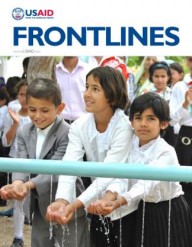

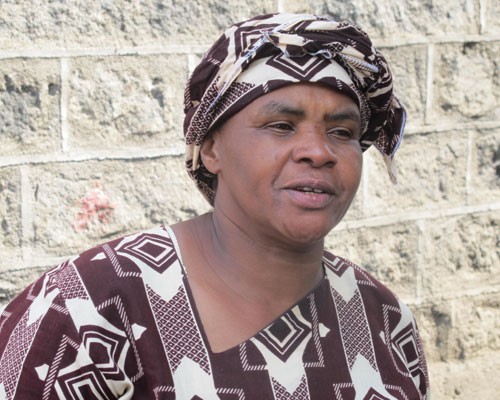
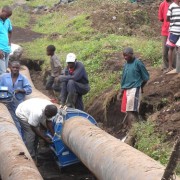
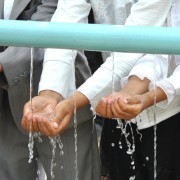
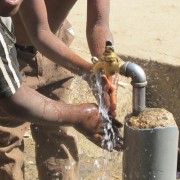
Comment
Make a general inquiry or suggest an improvement.